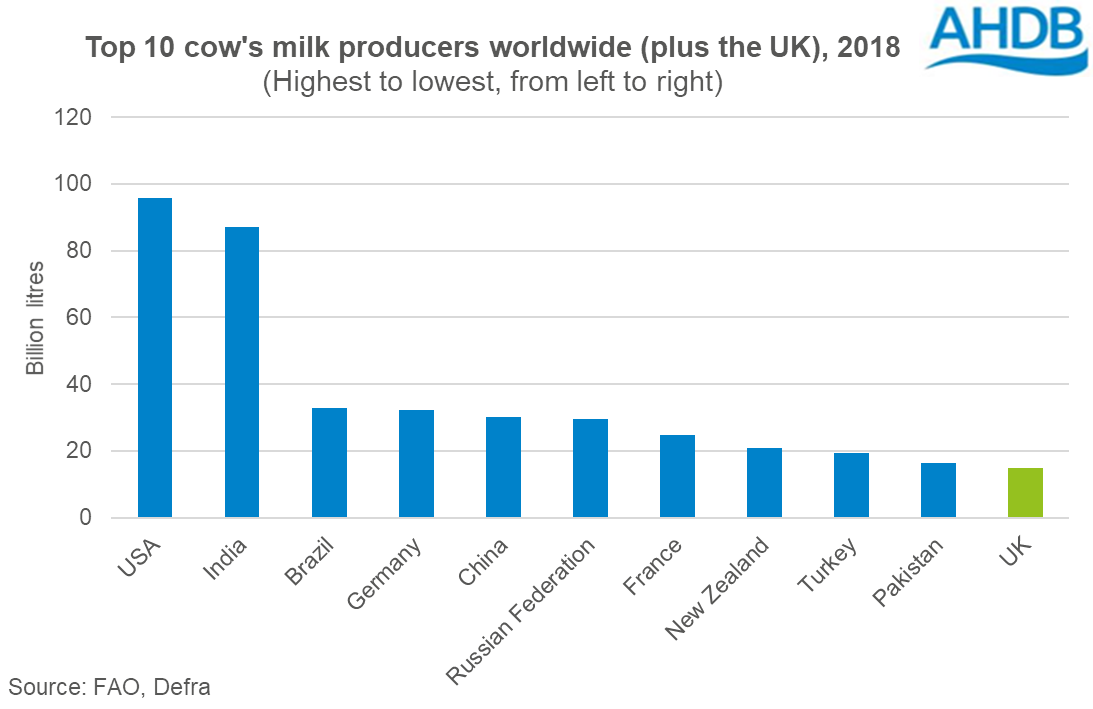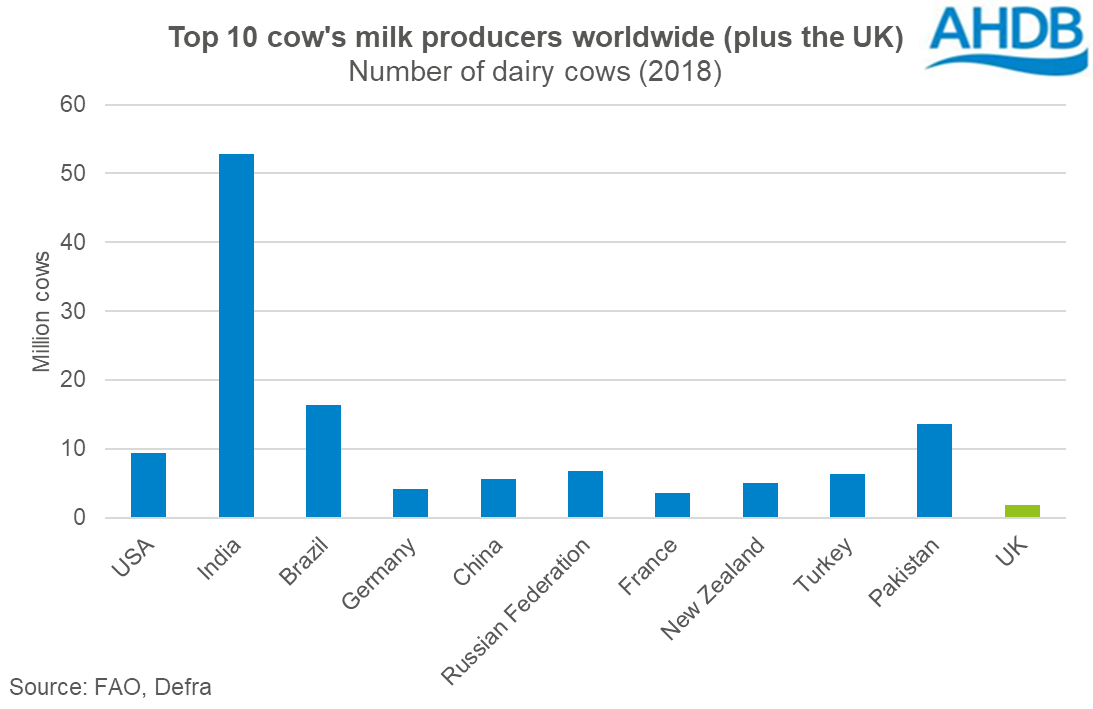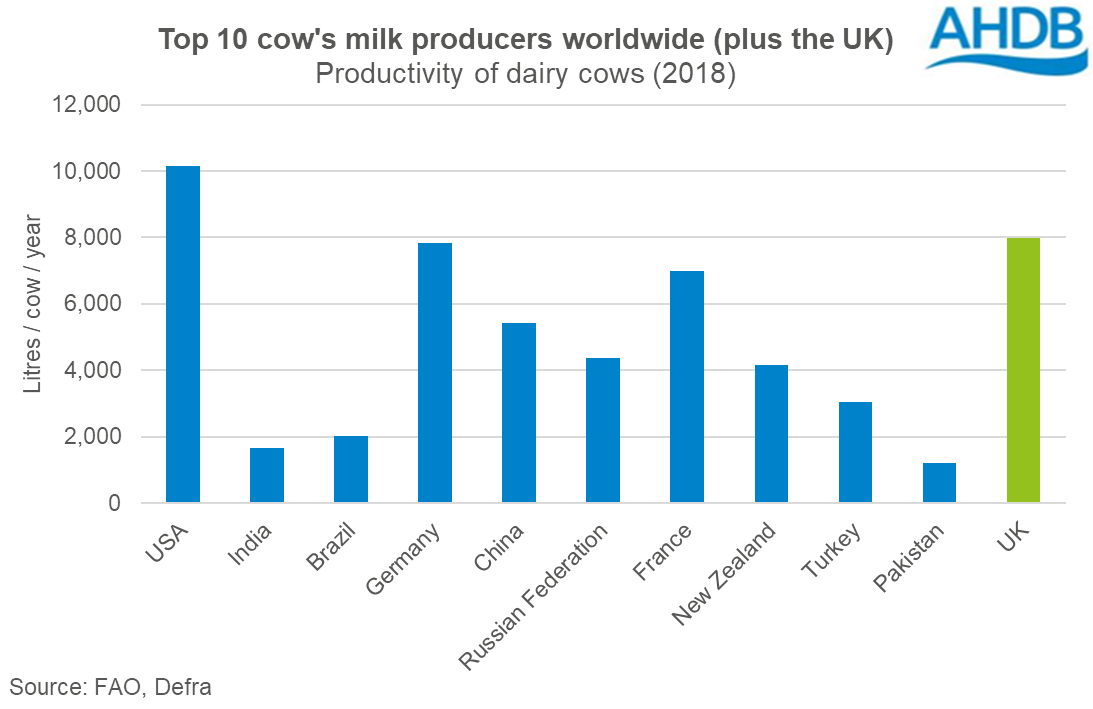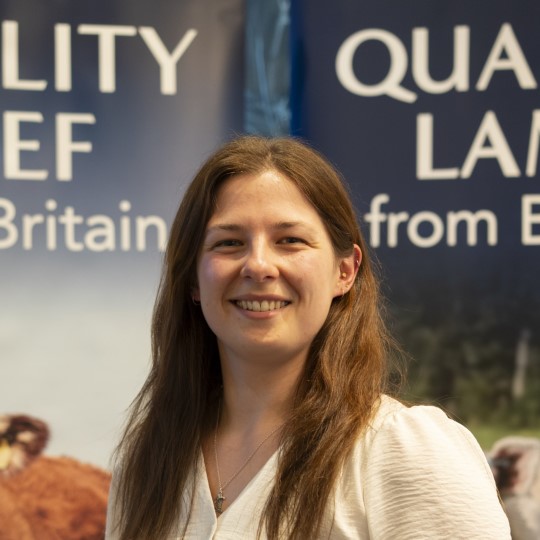UK milk productivity: The global context
Wednesday, 23 September 2020
Milk production
According to the latest data available from the Food and Agriculture Organization of the United Nations (FAO), in 2018 global cow’s milk production totalled approximately 663.3 billion litres. The largest individual cow’s milk producer was the USA, followed by India and Brazil. For context, the UK was the 11th largest producer of cow’s milk globally, producing nearly 15 billion litres (Defra).
The following charts show production, dairy cow numbers and cow productivity for the top 10 biggest milk producing nations in the world, plus the UK, who are ranked 11th.

Cow populations
In the same year, there were 265.1 million cows in the world. India had the highest number of cows by far, at 52.8 million head*. Second was Brazil (16.4 million) and third, Pakistan (13.6 million). Defra figures show that the UK had 1.9 million head in the milking herd that year.

Productivity (milk yield)
Cow numbers vary greatly between countries, and so does cow productivity, due to differences in breeding, feeding and production systems. The global average productivity of dairy cows in 2018 was around 2,500 litres/cow/year (FAO).
Of the top 10 milk-producing nations worldwide, the US ranked highest for productivity with an average yield of around 10,200 litres/cow/year. Germany and France follow, at 7,800 and 7,000 litres/cow/year respectively. Defra figures show that UK cows averaged 7,900 litres/cow/year in 2018, demonstrating one of the highest average yields per cow when compared to other top producing nations.

The future
The numbers would suggest that a significant improvement could be made to global milk yields by learning from some of the most productive in the world. For example, statistically if all dairy cows globally were as productive as cows in the UK, in theory, the same amount of milk could be produced with around one third of the current number of animals. In other words, we would theoretically need 83 million head instead of the current 265 million head.
While the range in productivity is one area the global dairy industry will need to address over the coming years, driving improvements will need to be done sensitively. The big milk producing countries have a wide range of structures, breeds, feed availability, genetics and environmental constraints. While recognising there is a need to feed a growing population, who have an increasing demand for dairy products, we must also ensure environmental targets are adhered to. This means there is likely to be an ever-increasing focus on what can be done to increase production per cow across the globe. Applying the statistical average for the UK to the global demand level simply gives us an indication of what the size of the prize could be. Read more here
*The cow number for India was confirmed by FAO to only include cows that have been milked in the year. It excludes what we understand to be a sizeable population of “stray” cows in the country, given the ban on slaughtering cattle in a number of states.


Sign up to receive the latest information from AHDB.
While AHDB seeks to ensure that the information contained on this webpage is accurate at the time of publication, no warranty is given in respect of the information and data provided. You are responsible for how you use the information. To the maximum extent permitted by law, AHDB accepts no liability for loss, damage or injury howsoever caused or suffered (including that caused by negligence) directly or indirectly in relation to the information or data provided in this publication.
All intellectual property rights in the information and data on this webpage belong to or are licensed by AHDB. You are authorised to use such information for your internal business purposes only and you must not provide this information to any other third parties, including further publication of the information, or for commercial gain in any way whatsoever without the prior written permission of AHDB for each third party disclosure, publication or commercial arrangement. For more information, please see our Terms of Use and Privacy Notice or contact the Director of Corporate Affairs at info@ahdb.org.uk © Agriculture and Horticulture Development Board. All rights reserved.

